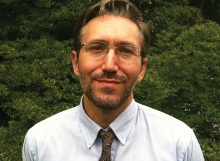
Building a Sanctuary for God and the Jewish People
What does it take to create a place conducive to communion with the Divine? Indeed, the edifice should be beautiful and inspiring. It should be infused with love and holy intentions. It will also require imagination, innovation, and adaptability. For as times and people change, the structure should also be able to accommodate the change in needs.
When God commanded Betzalel to construct the Tabernacle in the desert, he implemented these qualities:
“See, I have singled out by name Betzalel son of Uri, son of Hur, of the tribe of Judah. I have endowed him with a divine spirit of skill, ability, and knowledge in every kind of craft; to make designs for work in gold, silver, and copper. To cut stones for setting and to carve wood—to work in every kind of craft.”
Translation always involves interpretation. This writer took the Hebrew words:
לַחְשֹׁ֖ב מַחֲשָׁבֹ֑ת לַעֲשׂ֛וֹת בַּזָּהָ֥ב וּבַכֶּ֖סֶף וּבַנְּחֹֽשֶׁת
“Lachshov Machashavot” to mean: to make designs for work in gold, silver, and copper.”
However, the words literally mean “to think or consider thoughts.”
“To consider thoughts in gold, silver and copper” also doesn’t make much sense, so the commentators have interpreted them in numerous ways.
The Aramaic translation, known as Onkelos, says, לאלפא אומנון, “to be able to teach tradesman to work in gold, silver, and copper”
Rashi understands them as meaning to do something intricate, such as embroidery with those materials.
However, another Aramaic translation stays closer to the original words, למיחשב ברעיוניהון, “to consider the thoughts in the gold, silver, and copper.”
This implies that Betzalel could read into the donators’ thoughts. To those who contributed with the noblest intentions, their gold went to build the cover of the Ark of the Covenant. To those who gave for fame and recognition, their items were forged into less consequential items.
This interpretation impresses upon us that our thoughts matter; they can elevate or harm an item. We notice this all the time. Home-cooked meals may not be as intricate as a master chef’s, but we enjoy food infused with love even more. Likewise, Betzalel knew that in building a place for God and the Jewish people to dwell, the most elevated thoughts and emotions should be part and parcel of its construction.
I believe that “Lachshov Machashavot” can also mean to think ahead or to think deeply. Sometimes the obvious path, or what worked previously, is not best for now.
Rabbi Zalman Schacter Shalomi, the founder of Renewal Judaism, embodied this trait. He was once asked to lead Shabbat services at a UJA retreat.
“Downstairs (in the hotel), we were an enormous conglomeration of Jews from many denominations and communities, with barely enough prayer books to go around. The PA system was barely adequate; the air-conditioning was broken, and fans were blowing all over the place. Noise? Meshuggeh. I come down with my Hasidic garb, which I wore in those days, to find twelve rabbis sitting there in the middle of the room, leaning back, arms folded, skeptical looks on their faces: “We want to see how this guy’s going to handle this.” After sizing up the situation, I walked over to the rabbis and said, “Chaverim, rabbonim, friends, and teachers. You realize this is an impossible service, right? So I’m going to try to do this with Stephen Foster melodies because that’s the only thing that I can count on everybody in the crowd knowing. I beg of you to disperse yourselves among the crowd and not sit in one group. And please help me out and sing out loud because I’ll be embarrassed if you don’t.” And they did! We sang Lecha Dodi to the tune of “Beautiful Dreamer,” and the Hashkiveinu prayer to “Autumn Leaves.” We finished with Adon Olam to the tune of “Shenandoah.” It was a wonderful service, and everybody went along with it.”[1]
Shalomi recognizes that this is not necessarily the service one wants to do regularly, but one always needs to evaluate the people, time, and place. One needs to think, “What’s best in this situation?”
When designing the Tabernacle, I’m sure Betzalel thought the same thing. What kind of structure will be best for these people under these circumstances?
This question goes beyond the structure of a Temple. It also encompasses what goes on in the sanctuary. I think we’ll all agree that the Jewish people of today are different than they were fifty-four years ago when our synagogue was established. So, at our Town Hall on March 26th, I hope we can have a respectful, productive meeting to define what it is we want to conserve and what we want to change.
Creating a sanctuary, a place for God and the Jewish people is a complex process. Not only does it involve sophisticated design, but also great intention. It needs to be built and preserved with love and respect. Perhaps most importantly, there needs to be a review: Are this sanctuary and its practices in sync with the Jewish people now? We will need to channel our inner Betzalel.
R’ Neil
[1] Rabbi Zalman Schacter Shalomi, Jewish with Feeling, Riverhead Books, 2005, pp. 99-100